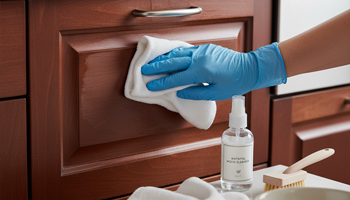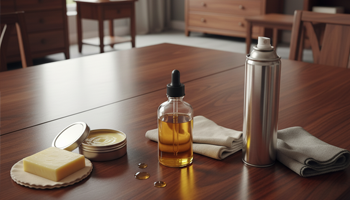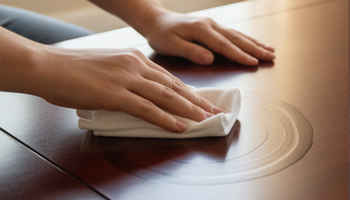Wood Furniture
Make furniture-care decisions that balance sheen retention, stain resistance, touch-up ease, and lifetime cost. In this child category we compare finish systems (lacquer/shellac, water-based poly, oil-modified poly, hardwax oil, wax), cleaning chemistries, and refresh calendars—so tables, dressers, sideboards, and cabinets stay beautiful without surprise repairs.
Finishes & Sheen Strategy
Match finish to use-case and repair appetite. Water-based poly stays clear and resists household chemicals; oil-modified poly adds warmth and blends well in touch-ups; lacquer/shellac deliver furniture-grade depth but need careful solvents; hardwax oils feel natural and spot-refresh easily; paste wax adds glow but needs disciplined upkeep. Choose matte/satin to hide micro-scratches; keep gloss for showcase pieces.
Read next: Best Wood Polish • Finish trade-offs logic: Polyurethane vs Oil Finish for Hardwood Floors (applies to furniture surfaces too)
Cleaning & Degreasing (Residue-Free)
Use pH-neutral, residue-free cleaners with a lightly damp microfiber. Avoid silicone-heavy sprays that create smear-prone films and complicate future refinishing. For dining sets and sideboards near cooktops, adopt cabinet-safe degreasing tactics.
Read next: How to Clean Greasy Wood Kitchen Cabinets
Rings, Spots & Stain Removal
Treat white heat/water rings first with low-risk methods; escalate only as needed. For dark water marks on stained tops, follow a safe, stepwise process to protect the finish and color integrity.
Read next: Remove Water Stains from Wood Furniture
Polish, Wax & Luster Management
Use polish to enhance luster and hide micro-marring—always compatible with the existing topcoat. Reserve paste wax for decorative pieces or low-wear tops; apply thin, buff well, and avoid stacking incompatible products (e.g., wax over fresh water-based poly).
Read next: Best Wood Polish
Food-Contact Scenarios (Dining & Prep Zones)
For butcher-block inserts, breakfast bars, and dining areas where food contacts wood, choose finishes and maintenance that are food-contact safe and easy to refresh.
Read next: Food-Safe Wood Oil
Touch-Ups & Deeper Repairs
Keep a kit for nicks (wax-based putty + color markers). For finish-level scratches, light abrade and refresh the film; for through-finish gouges, feather, stain-match, and topcoat—or consider a localized refinish on table leaves/panels. Concepts for triaging depth and avoiding the strip-and-start-over cycle mirror floor care.
Read next: Theory & pathways: Refinishing Hardwood Floors (concepts map to furniture panels)
Humidity, Sunlight & Placement
Maintain indoor RH ~35–50% to reduce seam telegraphing, veneer checks, and joint creep. Shield tops from prolonged sun to limit ambering and differential fading; use coasters and mats under plants and lamps.
Read next: RH strategy: Humidity Control for Hardwood Stairs & Trim (indoor RH guidance applies to furniture)
Read next (summary):



